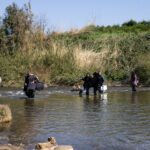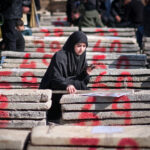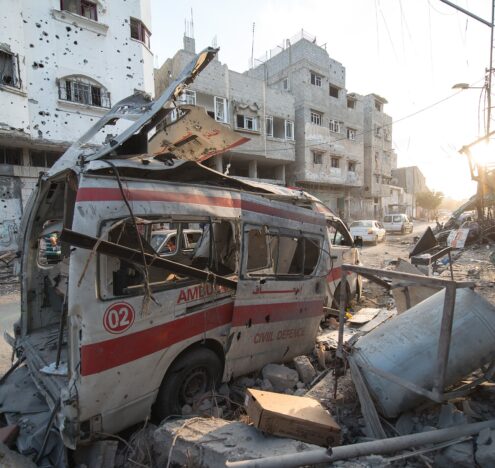The number of displaced people around the world grows every year, and no amount of border enforcement, walls, and ramped-up patrols has stopped people seeking safety from war, conflict, economic collapse, and climate catastrophe.
Yet, even as people continue to make risky journeys with the hopes of finding refuge, countries around the world have increasingly turned technology like artificial intelligence and high-tech surveillance to try to stop them.
In a recent report, the Border Violence Monitoring Network (BVMN) examined Croatia’s record on the matter. For years, Croatia has stood accused of routinely violating the rights of refugees and migrants on its borders with Serbia and Bosnia. In fact, BVMN has documented Croatia’s pushbacks — or extrajudicial expulsions — of more than 27,000 people across 1,024 incidents since 2017.
The country’s use of surveillance technology on its borders isn’t new, the report points out, but surveillance drones, helicopters, thermal cameras, and vehicle scanners have become routine features in the arrests of people on the move.
“The ability of the Croatian police to secure the border through technology is dependent on the geography and landscape of the respective border area,” BVMN explains. “Through the lens of a local journalist … we were able to draw a picture of the development and advancements in border surveillance technology at the Bosnian-Croatian [border] and Serbian-Croatia border.”
Technology won’t help Croatia or any other country stop migration, as one interviewee told BVMN, “but technology can be used to predict, observe, [and] surveil, and this is what’s been happening more and more in the context of prediction.”
*
In other words, technology helps insofar as it further enables Croatian border authorities to catch, detain, and expel refugees and migrants. BVMN did not find proof of “causal relationships between the deployment of technology and the restriction of illegalized migration within our period and field of research.”
With the aid of technology or not, border violence continues unabated. As the report notes, “pushbacks seem to take place even without the use of any advanced technology and illegalized migration takes place despite the deployment of AI and advanced technology at the border.”
Perhaps most importantly, the borders serve technology as much, if not more, than technology serves border enforcement.
“Finally, if one turns the question around, and asks not for the role of technology for borders but the role of borders for technology,” BVMN concludes, “the border areas emerge as an important testing ground of technologies [on] a vulnerable population without much access to their rights and data protection.”
In any case, the explosion of new high-tech advancements is changing the way governments look at migration. People around the world will no doubt continue to flee violence and poverty, among other hardships, but what they see when they reach borders might look a lot different in the coming years.




















